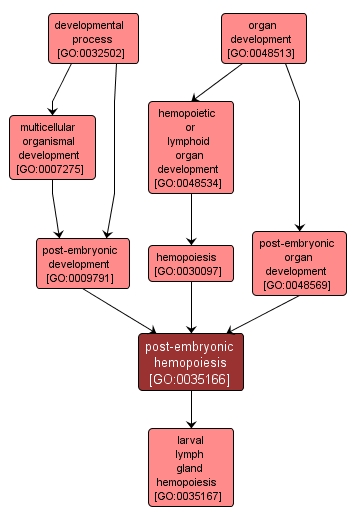GO TERM SUMMARY
|
| Name: |
post-embryonic hemopoiesis |
| Acc: |
GO:0035166 |
| Aspect: |
Biological Process |
| Desc: |
The stages of blood cell formation that take place after completion of embryonic development. |
Synonyms:
- post-embryonic haemopoiesis
|
|

|
INTERACTIVE GO GRAPH
|














